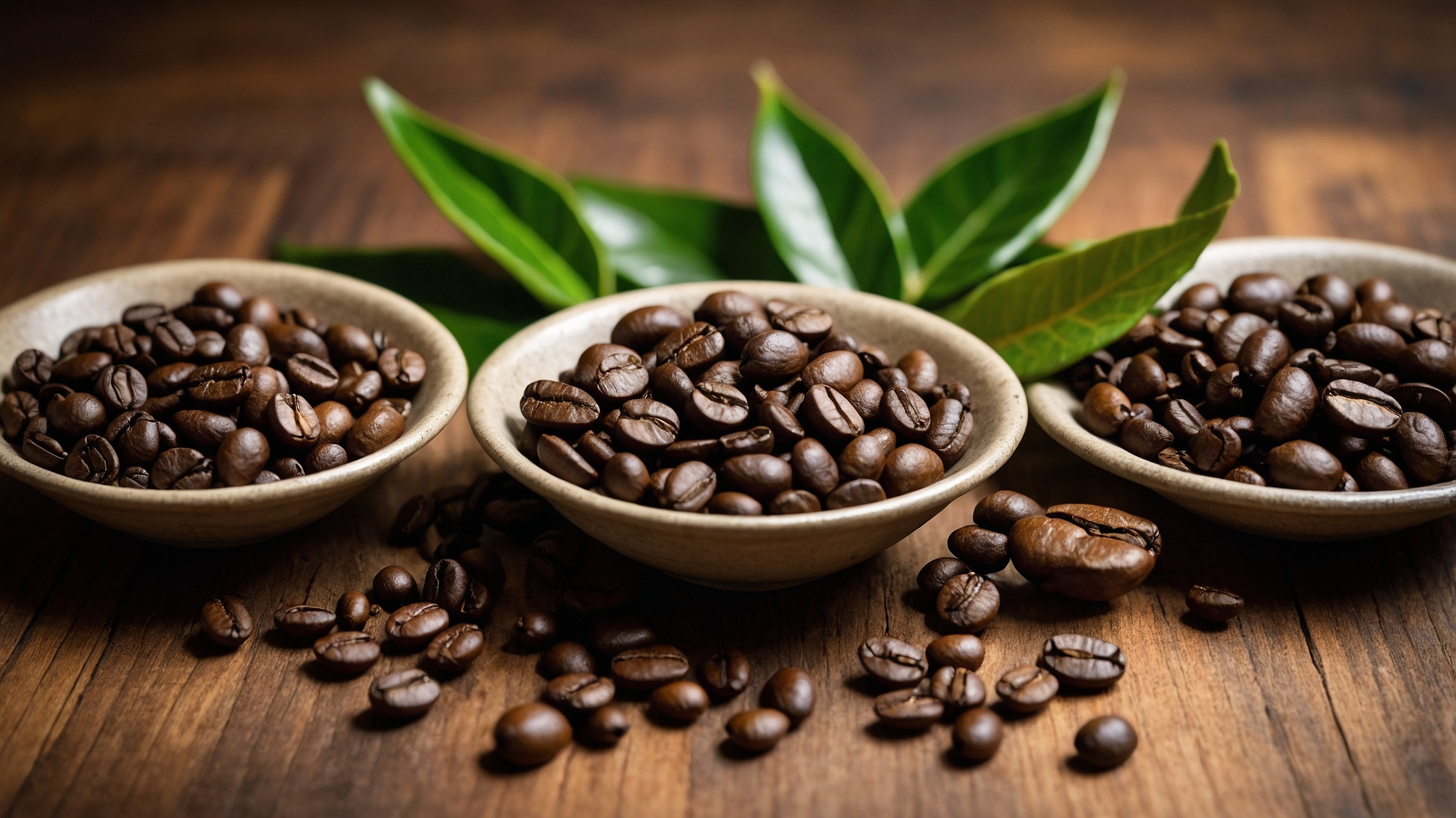A Beginner’s Guide to Coffee Bean Types and Flavors

Step 1. Arabica vs. Robusta: Understanding the Two Main Types
Arabica
-
Origin: Native to Ethiopia, Arabica beans are the most popular, accounting for about 60–70% of the world’s coffee production.
-
Flavor Profile: Arabica is known for its smooth, complex flavors with notes of fruit, flowers, and nuts. It typically has higher acidity, giving it a brighter and more vibrant taste.
-
Growing Conditions: Arabica beans are usually grown at high altitudes (600–2,000 meters above sea level) and prefer cooler climates. These plants are more sensitive to pests and diseases, requiring careful cultivation.
-
Examples: Ethiopian Yirgacheffe, Colombian, Guatemalan Antigua.
-
Good to Know: Most specialty coffees are based on Arabica beans.
Robusta
-
Origin: Native to Central and Western Africa south of the Sahara, Robusta beans are widely grown in Africa, Indonesia, and Vietnam.
-
Flavor Profile: Robusta offers a stronger, more bitter taste with earthy, nutty, and woody notes. It contains more caffeine, which gives it a richer and more bitter flavor.
-
Growing Conditions: Robusta grows at lower altitudes (up to 600 meters above sea level) and is more resistant to pests and diseases. It is easier and cheaper to cultivate, making it less expensive on the market.
-
Examples: Vietnamese, Brazilian Conilon, Indian Cherry.
-
Good to Know: Robusta is commonly used in commercial blends and coffee capsules.
Step 2. Exploring Coffee Growing Regions and Their Unique Flavors
Central and South America
-
Colombia: Known for well-balanced coffee with mild acidity and a smooth, medium body. Common flavor notes include caramel, nuts, and red fruits.
-
Brazil: Produces coffee with a rich body, low acidity, and sweet, chocolatey notes. Brazilian coffee is often used in espresso blends.
-
Guatemala: Offers complex, full-bodied coffee with bright acidity and notes of cocoa, toffee, and flowers.
Africa
-
Ethiopia: Famous for its diverse coffee varieties, often featuring vibrant acidity, floral aromas, and fruity notes like blueberry, strawberry, and citrus.
-
Kenya: Known for its rich, full body with high acidity and flavor notes of blackcurrant, tomatoes, and tropical fruits.
Asia and the Pacific
-
Indonesia: Produces bold coffee with earthy, spicy, and woody notes. The most famous regions are Sumatra and Java.
-
Vietnam: Primarily grows Robusta, resulting in strong, bitter coffee with chocolatey and nutty notes. Vietnamese coffee is often served with condensed milk.
Step 3. Recognizing Specialty Coffee Beans
Single-Origin
Single-origin coffee comes from a specific region, farm, or even a specific plot within a farm. These beans offer unique flavor profiles that reflect the environment where they were grown. Single-origin coffee is especially popular among connoisseurs who appreciate distinctive, recognizable flavors.
Blends
Coffee blends combine beans from different regions or varieties to create a balanced flavor profile. Blends are often used for espresso to achieve a harmonious taste experience.
Specialty Grades
Specialty coffee beans are graded for quality based on factors like aroma, flavor, acidity, body, and aftertaste. Beans scoring 80 or above on a 100-point scale are classified as specialty coffee. These beans are typically Arabica and grown under specific conditions with careful processing to ensure high quality.
Step 4. Choose the Coffee That Suits Your Taste!
By understanding the differences between bean types, regions, and processing methods, you’ll be able to choose the coffee that best matches your personal preferences.
Enjoy your coffee journey and happy brewing!
